Carrots "Sentyabrina" Siberian Garden: description, agricultural technology and reviews
With the onset of the sowing season, many gardeners are looking for good vegetable seeds for their site, including the seeds of everyone's beloved carrots... The producer of seed "Siberian Garden" offers one of the best mid-season carrot varieties "Sentyabrina".
Content:
- Description and reviews of the variety
- Sowing and caring for carrots
- Cleaning and storage of vegetables
- Protection against diseases and pests
Description and reviews of the variety
The unpretentious and fruitful variety of Sentyabrina carrots has many undeniable advantages:
- it is resistant to many vegetable diseases
- has excellent taste
- even and neat root crops fit perfectly into any container, and this is convenient during transportation
- during winter storage of beds
- suitable for both canning and raw consumption
- frozen for winter use
The main advantage of Sentyabrina carrots among other types is the yield of marketable products up to 94%. This type of root crop has many positive reviews from gardeners and gardeners cultivated carrots. The Sentyabrina carrot variety belongs to mid-season and very productive crops. From the moment of sowing to harvesting, 120 days pass.
To accelerate the germination of seeds and better ovary, growth stimulants specially developed for this type of plant can be used.
Siberian carrots have the shape of a semi-spreading rosette. Its medium-dissected leaves are bright green and medium in size. The fruit has a blunt, slightly rounded tip, a thickened cylindrical shape and reaches 17 cm in length. They are characterized by an even and smooth surface, delicate and thin skin. Their average weight reaches 150 grams. Carrots are characterized by rich orange juicy sweet pulp, which contains on average up to 18% carotene and many other substances useful for the human body. Carrot yield reaches 230-550 centners per hectare.
Sowing and caring for carrots
Cold resistance of "Sentyabrina" makes it possible to sow crops in early spring. March is the most successful month for sowing early varieties of vegetables. The carrots are sown in a shallow groove made with a hoe; if there is insufficient moisture, its bottom must be watered. Seeds are poured out or laid out alternately, at a distance of 2-3 cm from each other, for convenience, pelleted seeds are often used. Then the hole is carefully sprinkled with well-fluffed earth (this can be done manually) and poured from a watering can.
The sowing depth should not exceed one and a half centimeters. You can sprinkle the seeds with soil mixed with sand (1: 1). Most of the new hybrid carrots are fairly high yielding and taste good even when overripe. They are designed to grow this vegetable in almost ideal conditions, so they will not give a positive result in a simple, infertile area.
The first and main task of a farmer in growing Sentyabrina carrots is the correct planting, it should not be deep and dense.
Basic carrot care:
- The first shoots of carrots will appear in about 25 days after planting, maybe even after 20, provided that the soil is well fertilized and loose.
- After the appearance of the first shoots of the vegetable, the first thinning is performed. Here, the opinions of experts differ, but the standard planting density is considered to be 25-30 carrots per meter or 4-5 cm between shoots.
- The second thinning is done in order to achieve a harvest of large fruits, for this, a gap of 6 or even 8 cm is left between the carrots. This distance will give root crops more freedom for growth and additional nutrition from the adjacent soil.
Further care is quite simple: you need to remove weeds (preferably by the root), water regularly (ideally in the morning and in the evening), loosen the aisles and, if necessary, deal with pests.
Cleaning and storage of vegetables
The harvest time for Sentyabrina carrots depends on the climatic conditions of its cultivation. But in general, September-October months are considered the most optimal, since already at five degrees of heat, carrots stop growing. Carrots harvested early will suffer losses, as their shelf life will increase. If you are late with harvesting, autumn moisture can develop gray rot on the carrots and the crop will die. When exposed to frost, part of the crop is also lost, carrots freeze already at -3 C.
It is better not to bring the harvest of this carrot variety to overripe, since the only drawback of this variety is the cracking of the ripe fruit. For long-term storage, the healthiest roots are selected that are not affected by harvesting or pests. Small, sick and damaged carrots are separated and used primarily (for food, conservation, juices, etc.).
The most reliable way to store carrots is to sprinkle it with clean, dry sand.
It will protect the fruits from bacteria and spores, as well as moisture loss, and until spring the carrots will be juicy and firm. In a cool dry place, there is a corner for storing vegetables; it is best to store carrots in the basement. A small layer of sand is poured into a box or a dense wooden box and a layer is not laid out very tightly on it carrots, then it is poured again with sand and again in the same order until a carrot pyramid is obtained. It is in this state all winter; only the top layer is constantly removed for needs.
This carrot variety has another distinctive feature. In the southern regions, the fruits can winter in the beds, unless of course they are cracked. For this, the tops are removed (carefully so as not to damage the fruit itself) and the bed is sprinkled with dry leaves or peat. Then everything is covered with straw, and even better with spruce branches, since small rodents adore straw. A film is placed on top that protects the carrots from possible rains. In winter, the garden bed can be insulated with snow. So until April the harvest will be safe and sound. The optimum temperature for storing vegetables is -1– + 1C, humidity should be about 80–90%.
Protection against diseases and pests
In order to grow a good harvest of carrots, you need to know what diseases this type of vegetable is predisposed to. "Sentyabrina" most often affects:
Carrot fly:
- Features: it is quite difficult to completely get rid of the carrot fly, since it lays eggs all the time and its new generation appears twice a year.
- How to fight: autumn plowing of the soil, pre-sowing seed treatment insecticides, frequent weeding, double processing of crops with "Decis Profi", "Aklellik", "Inta-Vir", "Sharpey".
- Folk remedy: tobacco dust is mixed with slaked lime (5 g per square meter), the aisle of the planted culture is sprinkled with the mixture.
Carrot beetle:
- Features: a small insect flies to a bed of coniferous plantations and affects carrot tops in early spring. The larvae laid by the female suck the juice from the tops of the plant, as a result of which the greens dries up.
- How to fight: in order to avoid infection, do not sow carrots near conifers and cover the garden with special fiber. You can water the seedlings with infusion of orange peels or sprinkle with tobacco.
Carrot moth:
- Features: it harms all celery plants. Eggs are laid by the female during carrot flowering.
- How to fight: spray the carrot tops with a decoction of tomato tops and laundry soap. For its preparation, 3 kg of tops are finely cut and poured with 10 liters of boiling water (infused for a couple of days), filtered and 40 g of household soap is added to the finished solution.
Fomoz:
- Features: affects the plant towards the end of its growth. The disease most often occurs during storage of a vegetable, dry rot appears on it, where subsequently depressed dark spots form in small black dots (fungus spores). At air temperatures above 10C, spore germination increases and the root crop dies. Spores can overgrow the sand and the vault itself.
- How to fight: the plant's resistance to disease will occur due to an increase in potassium fertilizer (potassium chloride) when digging a garden, a solution is used for this (40-50 g per 10 liters of liquid). Warming up the seeds before planting to 50C can also save the day. The sand for storing carrots should be new every year.
For many fungal diseases and bacteria, the preparations Guapsin and Mikosan are used, Trichodermin removes root rot well, Verticillin fights against aphids.
More information can be found in the video:
Proper care of Sentyabrina carrots, attention to the appearance of the tops and elimination of possible diseases in the early stages will significantly increase the yield of juicy, sweet and tasty self-grown carrots.




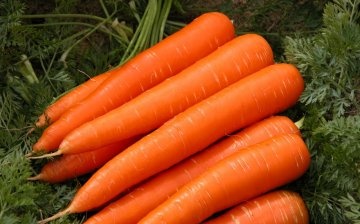
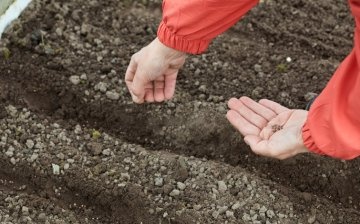
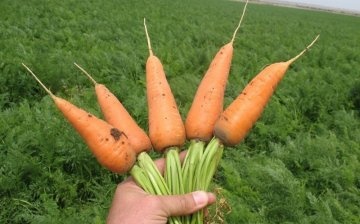
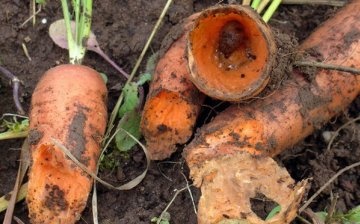





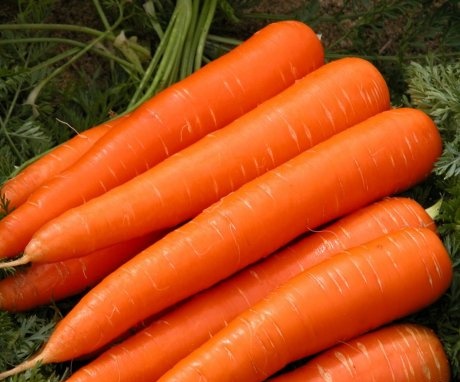
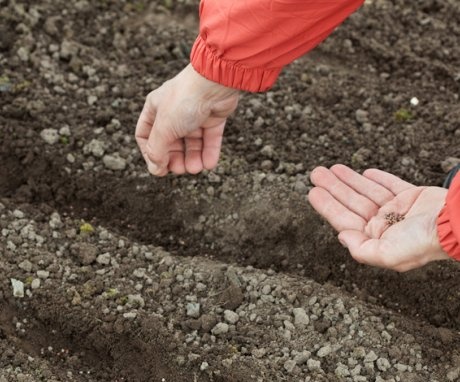

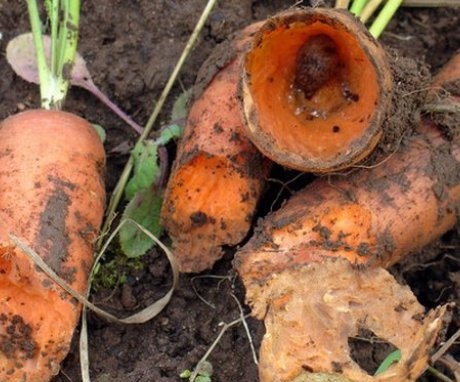
We have planted different varieties of carrots many times before winter and early spring, and always, carrots planted in autumn grew much better. This variety is also best planted in the fall. Carrot seeds tolerate frost well and sprout amicably in spring.